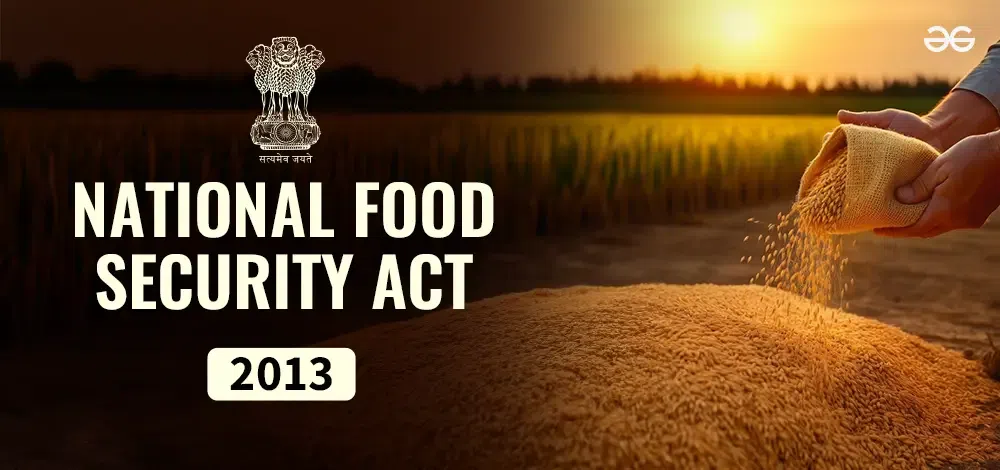The Indian Constitution does not provide any explicit provision regarding the right to food, but it is enshrined in the fundamental right Article 21 i.e., the right to life and personal liberty, which may be interpreted as the right to live with human dignity, which includes the right to food and other basic necessities. Hence, it is the duty of the government to ensure that all the citizens of India are provided with the basic necessities of life. The issue of “food security” was being addressed long ago by the government under the Public Distribution System (PDS) and the Targeted Public Distribution System (TPDS). So, the Parliament enacted the National Food Security Act on July 5, 2013[1] emphasising the shift from welfare to a right-based approach. The act legally entitles up to 75% of the rural population and 50% of the urban population to receive subsidised foodgrains under TPDS. [2] This Act also focuses on the women empowerment and declares a mandatory rule that the eldest woman in the household, age 18 or older, should be the head of the household for the purpose of issuing a ration card under this Act. [3]
Salient Features of the Act:
There are many characteristics that were published in the National Food Security Portal. Few are,
- State and UT-wise coverage is determined by the erstwhile Planning Commission (now called NITI Ayog) based on 2011-12 Household Consumption Expenditure Survey of the NSSO.
- The act entitles 35 kg of food grains per AAY[4] household per month, whereas 5 kg of food grains per PHH[5] person per month. There was a grievance redressal mechanism through state Food Commissions, DGROs, and Vigilance Committees at different levels that was provisioned for women empowerment.
Composition of the Act
This Act contains 13 chapters, 45 chapters, and 4 schedules. The Act deals with food security, food security allowance, identification of eligible households, reforms in targeted public distribution systems, women empowerment, grievance redressal mechanisms, obligations of state government and local authorities for food security, transparency, and accountability, and for advancing food security.
Objective
This act concentrates on the two goals of sustainable development set by the “United Nations General Assembly.” It seeks sustainable solutions to end hunger in all its forms by 2030 and to achieve food security. The aim is to provide good-quality food to everyone throughout India to lead a healthy lifestyle.
CHALLENGE TO FOOD SECURITY:[6]
The fight against food security has many obstacles, some of which are as follows:
a) Climate change: farming becomes more challenging due to rising global temperatures and unpredictable rainfall. Temperature variations affect not just crops but also other food-producing animals, like fisheries and livestock.
b) Lack of Access: Access to isolated places is limited. Due to a lack of access, indigenous people and other populations who live in rural areas, especially tribal people, are unable to take advantage of the food security schemes implemented by the government.
c) Overpopulation: A significant rise in population that is not matched by higher agricultural output leads to food scarcity.
AUTHOR:
Thirisha S, 4th-year student of B.A., LL.B. (Hons.) from School Of Excellence in Law.


